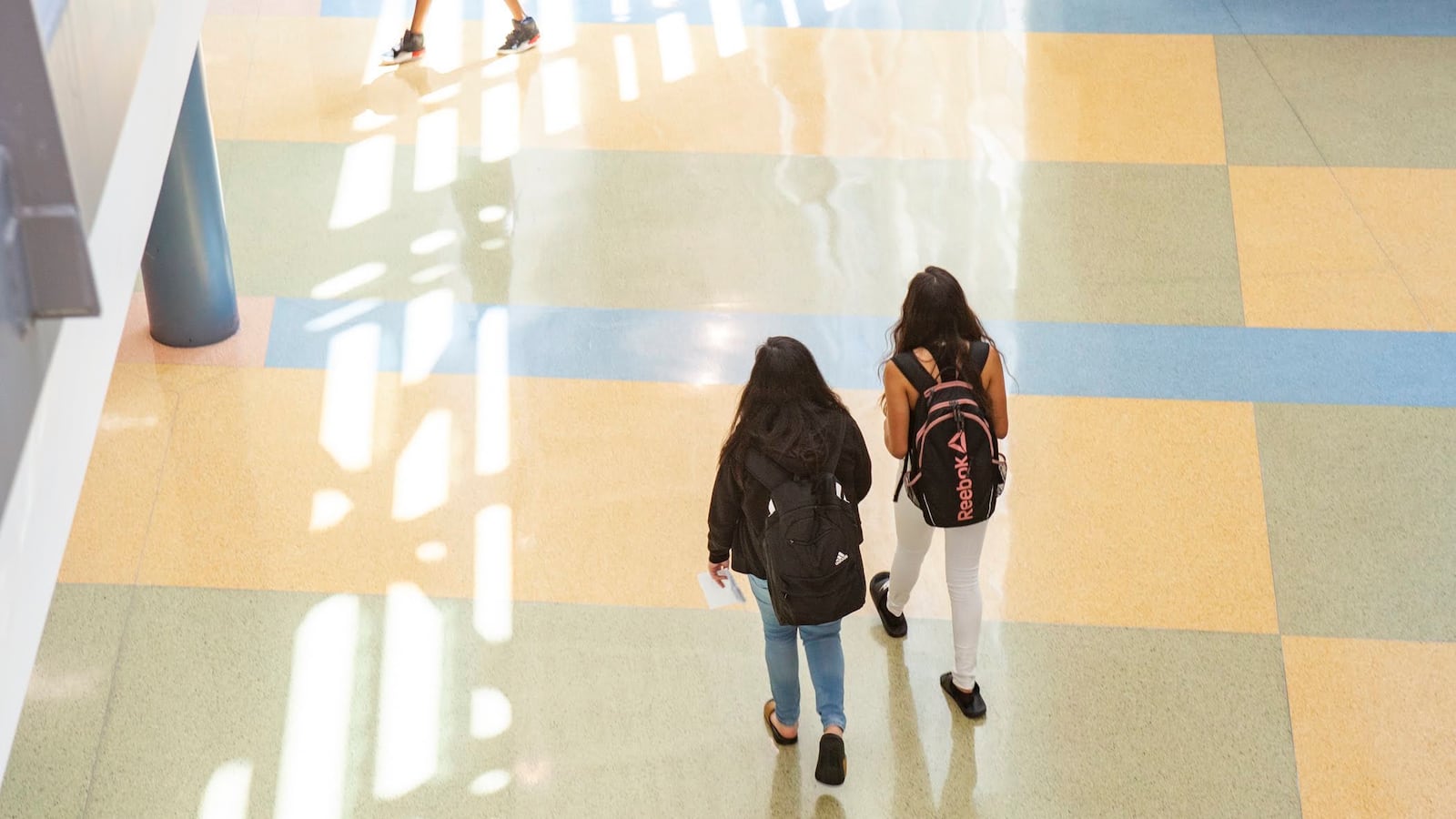Statewide, less than 40% of elementary students meet state English and math testing standards, according to Illinois report card data released Wednesday. This reflects little change from last year’s performance.
Statewide, 37.8% of Illinois third through eighth graders met or exceeded English standards on 2019 exams. Last year, 36.9% students hit those benchmarks. Statewide 31.8% of students passed the math exam, while 31.3% passed in 2018.
Related: More Illinois schools score top state ratings — a closer look at why
Illinois last year switched from one exam, the PARCC, or Partnership for Assessment of Readiness for College and Careers, to the IAR, or Illinois Assessment for Readiness. The tests are similar, but the IAR is slightly shorter.
While little changed for the state average, some schools saw significant gains. For years, Gordon Bush Elementary in East St. Louis has been well below the statewide average. But this year the school made major leaps ahead.
Gordon Bush is a majority black school and just over 95% of its students are considered low income. In 2019, 29.2% of Gordon Bush third graders passed the English portion of IAR and 40.3% met standards on math. That’s up significantly from 2018 when only 9% hit the mark on English and 13% on math.
In 2016, the school was awarded a federal School Improvement Grant, and administrators said that helped turn things around. They were able to offer more coaching and consulting to teachers and students. Principal Brittany Green said administrators were also able to address the needs of students, like behavioral issues.
“Once we got the behavior, going from a 22% suspension rate to now 0% for the last two years, that’s allowing students to stay in class,” Green said. “Not only be in class, but be focused and engaged. Now teachers can do their job, which is to teach.”
Green said Gordon Bush has been making steady improvement over the past few years, and administrators intend to implement best practices in other schools in their district. They already set goals for this year, including a 30% composite score on the IAR, a 95% attendance rate and holding steady with zero suspensions.
“We’re sure that we’re going to hit those goals. We have them posted throughout the building and classrooms,” Green said.
More advanced courses
Illinois State Board of Education officials are highlighting an increase in students taking rigorous courses like Advanced Placement and International Baccalaureate programs. (To read about Chicago specific gains and how the district is trying to recruit more students of color into advanced courses, click here.)
“These gains reflect Illinois’ investments in equity and opportunity,” said Dr. Carmen Ayala, the state superintendent of education.
About 1,000 more high school kids around the state participated in these programs. While state officials praise that increase, they recognize it hasn’t done much to move the needle on state tests or graduation rates.
“The benefit of advanced course work like AP is that students who have those credits can move on,” said Rae Clementz, ISBE director of accountability. “But at the end of the day, it also just builds critical thinking, communication skills that will benefit them no matter what they choose to do.”
ISBE officials said less than a quarter of students take advanced courses, and there is room for growth there.
Graduation rates saw a negligible difference from the 2017-2018 school year. The four-year graduation rate for 2019 was 85.9%.
Highest and lowest performing schools
ISBE placed more than 3,700 schools in one of four designations — lowest performing, underperforming, commendable and exemplary. The majority of schools in the state, 2,779, are considered commendable by ISBE. (To read more about this year’s state ratings, click here.)
But ISBE’s report card shows large gaps in student achievement even within districts. About 71 schools in Chicago Public Schools are considered underperforming, the lowest designation. But CPS also has the top five highest-scoring schools for the SATs — all schools that require students to test in.
In 2019, the average SAT English score was 497.5 and 497 for math. That’s a steady decrease from when Illinois schools started administering the SATs to all high school juniors starting in 2017. In 2017, the average was 511.5 for English and 504.4 for math. Scores of 540 or higher each on the math and reading sections of the SAT are considered meeting state standards.
New financial data on state report card
The state’s report card has a new look this year and additional data points.
For the first time, the state is highlighting per-pupil spending at the school level, including expenditures and sources of funding like federal and state. ISBE officials said the new information is intended for transparency and to allow school communities to talk about priorities in spending.
“Many districts, in addition to their communities, are seeing this data for the very first time,” said Jackie Matthews with ISBE.
The U.S. Department of Education requires the collection of certain civil rights data. New this year, the state report card includes disciplinary statistics, like rates of suspensions and expulsions.

Susie An covers education for WBEZ. Follow her on Twitter @WBEZeducation and @soosieon. Chalkbeat Chicago published this story in collaboration with WBEZ 91.5 Chicago.

